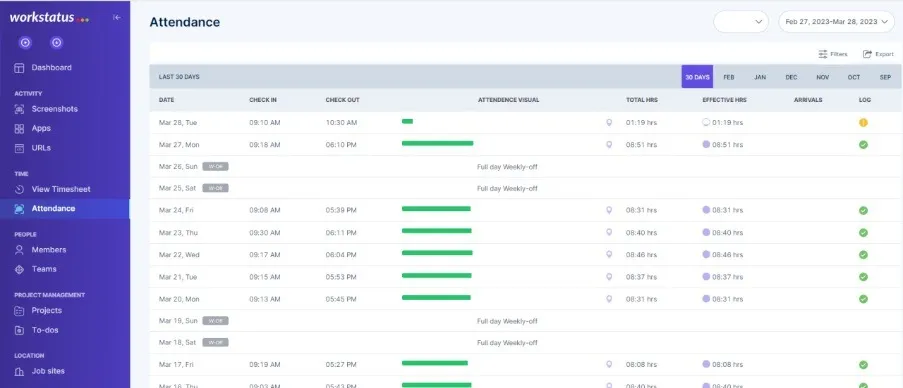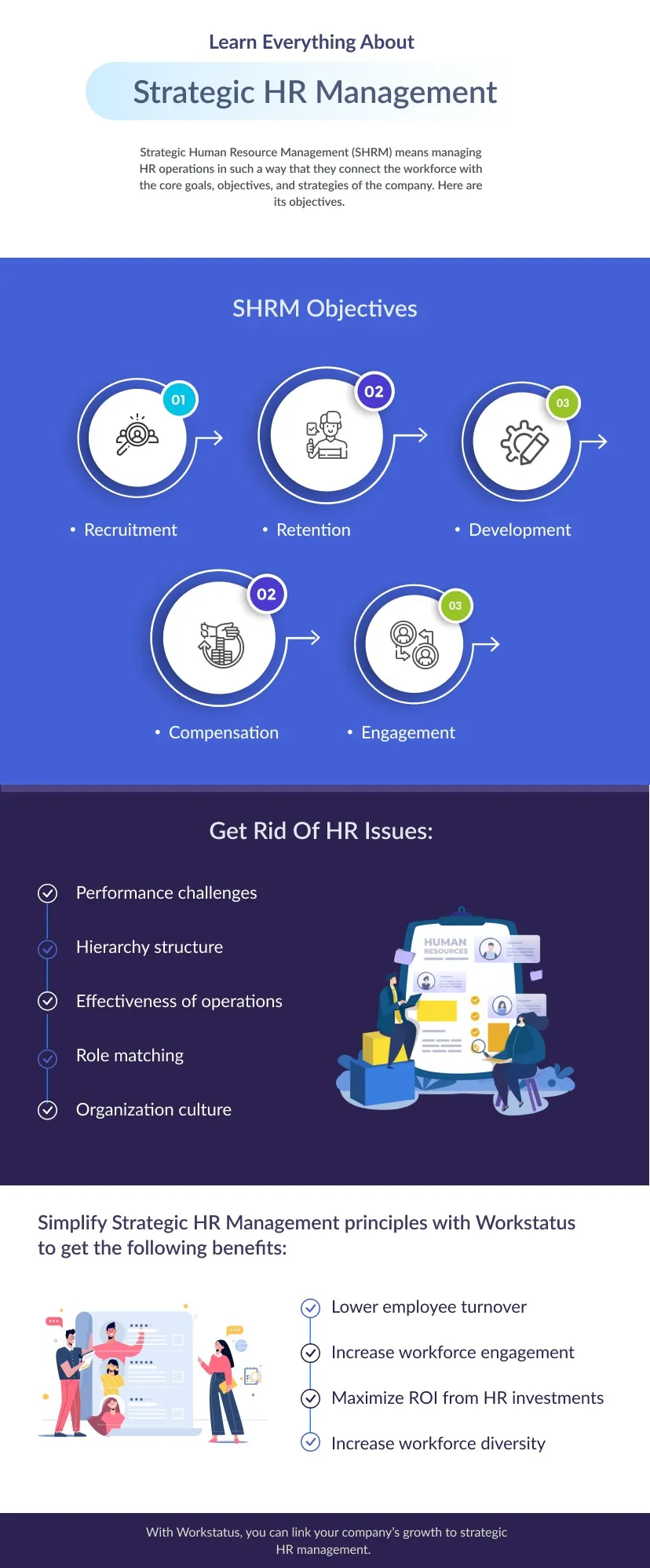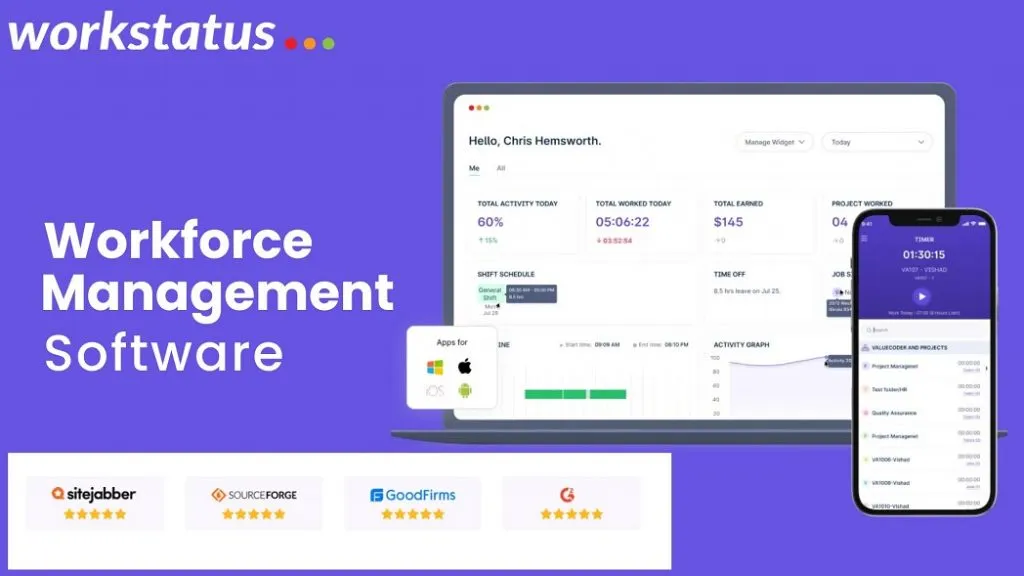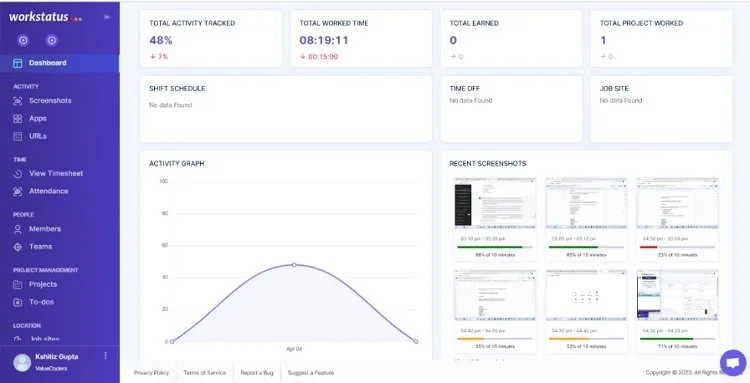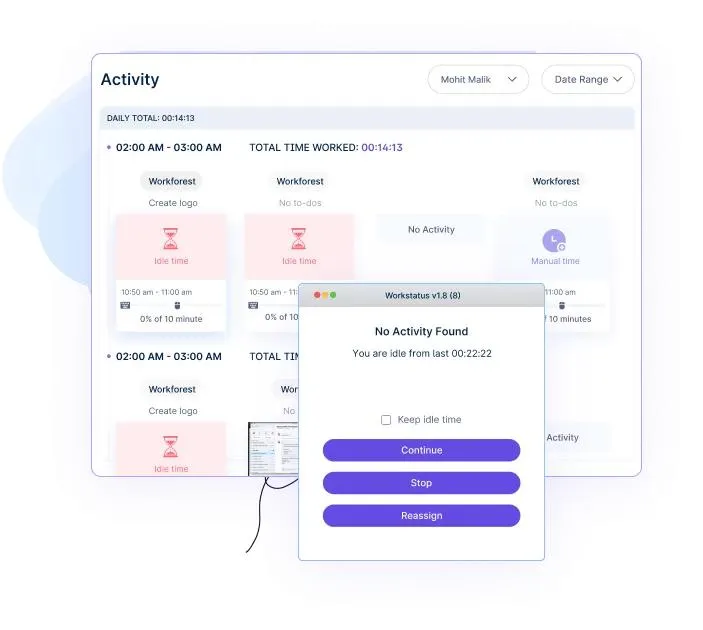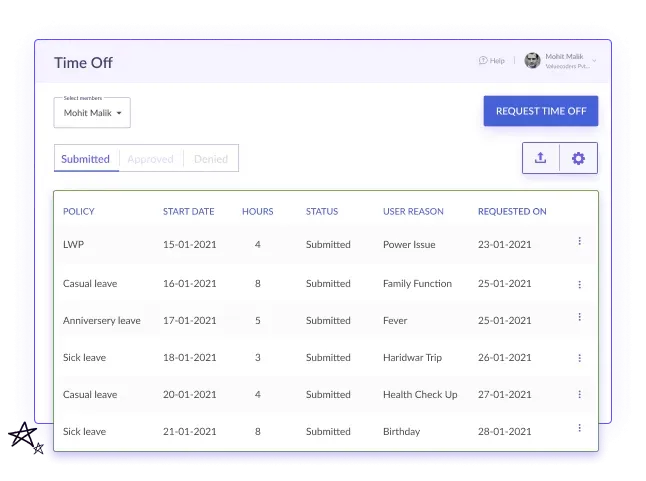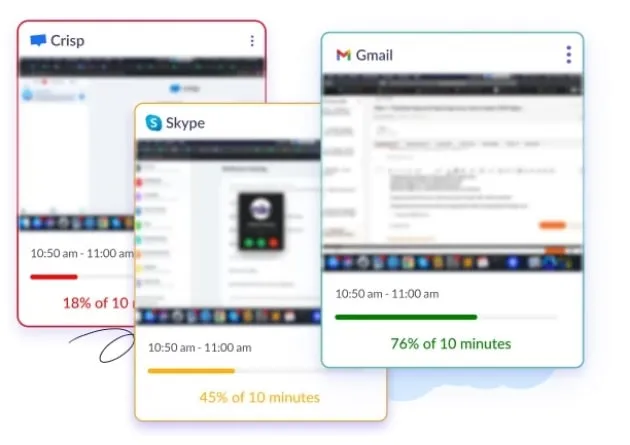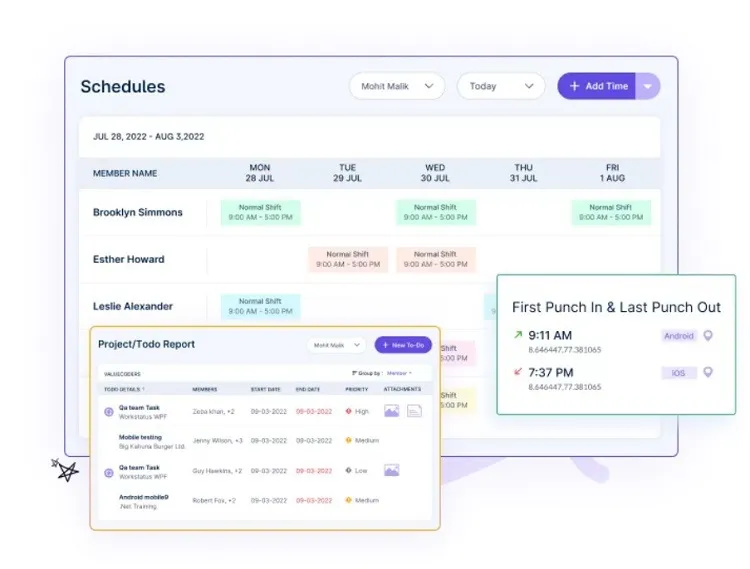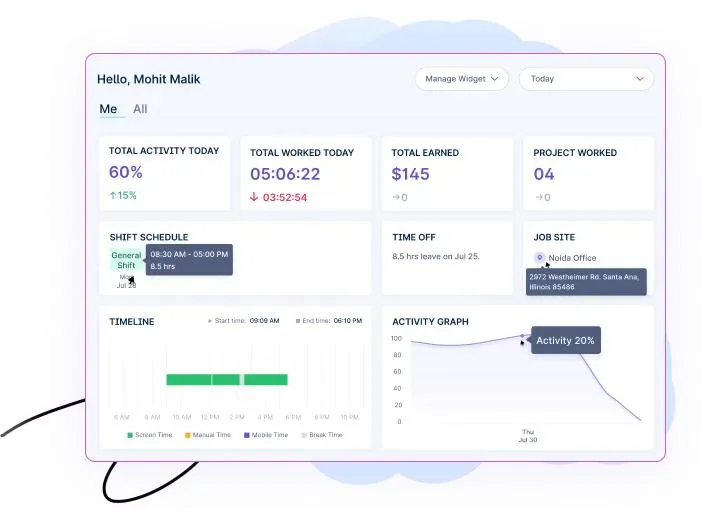Table of Contents
In today’s digital era, the role of HR has been at risk of being downgraded to a position different from those that come into core business goals.
Furthermore, the challenges of handling operations with a constantly evolving workflow made the HR leaders emphasize on improving workplace productivity to assist businesses in staying ahead of their competitors. This gives birth to the concept of Strategic Human Resource Management (SHRM).
What is Strategic Human Resource Management (SHRM)?
Source: Shutterstock
Strategic Human Resource Management means managing HR operations in such a way that they connect the workforce with the core goals, objectives, and strategies of the company. It covers the following areas of HR operations:
- Establishing practices that promote flexibility to give an edge over competitors
- Ensuring superior workplace productivity
- Building a fun and an engaging workplace
Being the most modern approach to HR management, the HR department must play a major role in its successful implementation. HR leaders should develop a deep understanding and knowledge of SHRM to become active partners in developing and implementing company policies.
SHRM can be implemented in almost every HR Operation: recruitment, onboarding, development, and rewarding performers. This approach provides HR with several ways to directly and positively impact the company’s overall growth. So, you must devise strategies linked to employee retention and development in cooperation with the organization’s goals.
In today’s world, it is not simple for any business to overcome HR challenges. There are multiple branches of the HR ecosystem that might confuse employers leading to wrong decisions. Hence, there could be a great loss of efficiency and productivity, leading to a slow business growth rate.
A Comprehensive Approach: Strategic Human Resource Management
Strategic HR management is unlike any traditional system, but it works in tandem with every department to form a clear understanding of the company’s goals. Companies implementing strategic HR policies have an HR department connecting with every business vertical, including marketing, operations, or IT. It assists in creating business plans that are well-synced with company goals and overall company objectives.
Through such an integrated system, the HR department becomes a key player in business growth and development. It means HR will no longer be just a service to hiring, onboarding, and paying employees. Besides, strategic HR management sees and positions HR as a strategic partner supporter of any company or business.
Significance of Strategic Human Resource Management (SHRM)
Organizations that know the importance of collaboration among all the teams while working towards common goals are likely to succeed faster than their counterparts. By implementing strategic HR principles, you can quickly analyze and improve employees’ performance leading to value addition for the organization.
Here are some benefits of Strategic HR Management:
- Improved work culture
- Boosted productivity
- Increased employee retention
- Better resource management
- Enhanced customer satisfaction score
- A proactive way to manage the workforce
If any company’s HR workforce isn’t aware of strategic HR planning and management, they can use Workstatus, an employee management software that can help them in the successful implementation of the strategic HR model.
However, to properly implement strategic human resources planning practices, the HR and the business leader (s) should be on the same platform to address challenges such as-
- Lack of engagement among stakeholders
- Cross-cultural issues
- Disconnect due to global operations
- Evolving technologies
How Does Strategic Human Resource Management Work?
Strategic HR planning is vital in developing human resources and retaining the best talent. It helps businesses to make their employees feel appreciated and valued, so they are always motivated to work with your company. But before moving ahead, you will require effective HR strategy planning with the help of the following steps:
- Identify the gaps in HR processes within your organization
- Investigate why these gaps exist, and who is affected by them
- Determine what changes need to be made based on the results of your investigation
- Brainstorm with HR professionals and key stakeholders to generate ideas for making these changes happen.
- Select the most promising ideas based on their impact on employees, cost to implement, and impact on other parts of the organization (like business units).
- Document these ideas as a list of actionable that can be used in your organization’s overall strategic HR planning process.
Strategic HR management has become necessary for every business, regardless of industry or field. Thus, it is not only meant for companies or enterprises with a large workforce. Any small or medium business can also implement SHRM principles to improve its speed of growth.
What are the Objectives of SHRM?
Strategic HR planning stresses resolving issues like-
- Hierarchy structure
- Performance challenges
- Organization culture
- Role matching
- Effectiveness of operations
However, there are five key objectives of SHRM principles:
1) Recruitment: Hire the right people for the job.
2) Retention: Keep good employees from leaving the company.
3) Development: Provide training and career advancement opportunities so employees can grow within the organization.
4) Compensation: Pay employees fairly based on their skills and experience level.
5) Engagement: Make employees feel like their opinions matter by including them in decision-making processes.
You must be wondering.
Is it possible to ease the process of SHRM implementation?
Read the next section to know the answer.
Simplify Strategic HR Management With Workstatus
Workstatus is the most powerful employee engagement tool to help businesses quickly implement SHRM principles. It allows you to easily track how much time your employees spend on different tasks to ensure they’re being as productive as possible.
With Workstatus, you’ll know when someone needs help with their work or when they’re being overly aggressive about work, compromising their personal life. This way you can prevent the burn-outs leading to serious issues.
With the in-depth insights that Workstatus provides, you’ll be able to make smart decisions about handling different teams based on real data rather than just guessing what’s happening in each department.!
Here is what you will get with Workstatus:
- Idle time tracker
Workstatus offers an idle time tracker that records the time an employee is idle or away from their workstation.
This feature enables managers to monitor employee productivity and optimize work hours.
- Compare procrastination vs. productivity
Workstatus allows managers to track the time employees spend on productive tasks versus time wasted on unproductive tasks, enabling them to identify areas of improvement and address productivity issues.
- Absence/Leave management
Workstatus simplifies leave management by enabling employees to request time off, and allowing managers to approve or deny the request within the platform.
This feature also tracks employees’ attendance and leave history.
- Active screenshots
Workstatus captures screenshots of employees’ workstations at regular intervals, giving managers visibility into the work being performed and ensuring accountability.
- Employee scheduling
Workstatus enables managers to create employee schedules and assign tasks, helping to ensure that work is completed efficiently and on time.
This feature also allows managers to monitor employee availability and adjust schedules as necessary.
- Workforce analytics
Workstatus provides detailed workforce analytics, including data on employee productivity, attendance, and work hours.
This data can be used to identify trends, track progress, and make informed decisions regarding workforce management.
Key Benefits:
- Increase workforce engagement
- Lower employee turnover
- Improve performance management processes and practices
- Increase workforce diversity
- Maximize ROI from HR investments
Get started with Workstatus here>>
Conclusion
All in all, strategic human resource management (SHRM) is possible and essential for building ambitious HR teams that view their roles as the foundation of senior leadership.
It’s better to understand there is no single way to review SHRM. That’s why it’s essential to position an HR team as having a unique impact on a company’s long-term success.
Moreover, planning and assigning resources to exert that impact in the best ways possible. Implement the right tools for your business’s best strategic human resource management plan.
FAQs
Ques: How do you create a reliable strategic HR plan?
Ans. To create a strategic HR plan, you must follow these steps:
- Know the company’s overall strategy.
- Recognize HR priorities as per the company requirements.
- Do a gap analysis of the current HR abilities.
- Set certain goals and action plans.
- Align HR metrics with company goals.
- Follow the plan with effective communication.
- Make adjustments as per new requirements.
Ques: What are the main 5 P’s in strategic HRM strategy??
Ans. The 5P’s strategy follows the five constitutional aspects: principles, purpose, processes, people, and performance.
Ques: Give an example of strategic HRM.
Ans. The main example of strategic HRM is purposeful hiring and effective communication. They are both pillars of any company that are needed to meet a long-term goal. Effective communication promotes transparency and builds a friendly space to address any concern.


